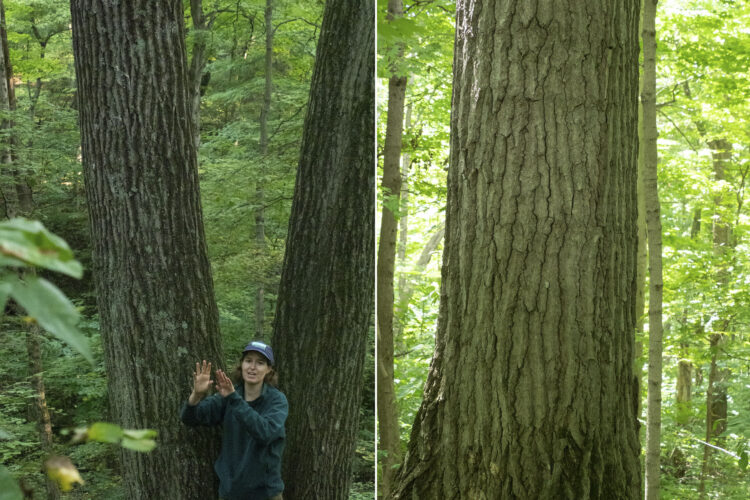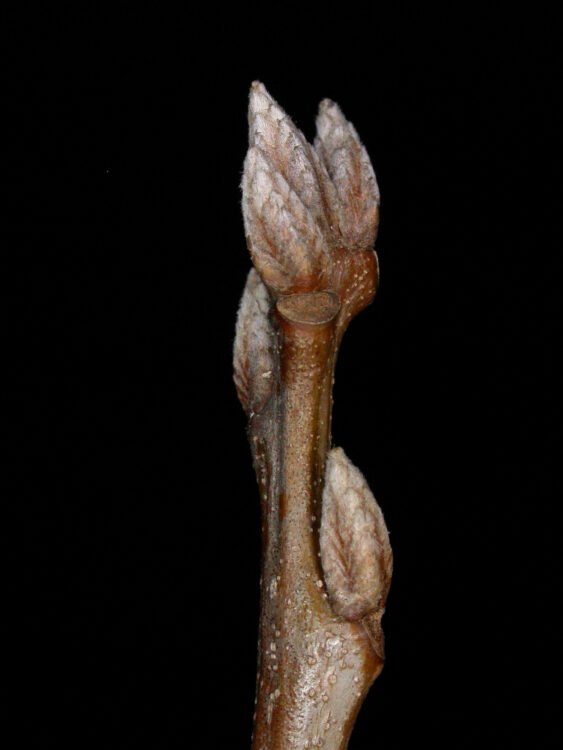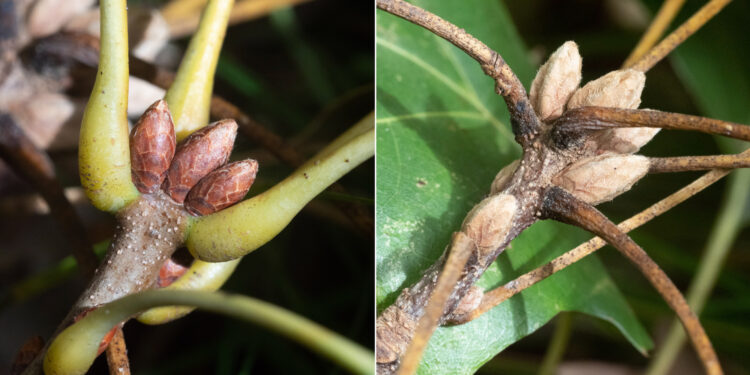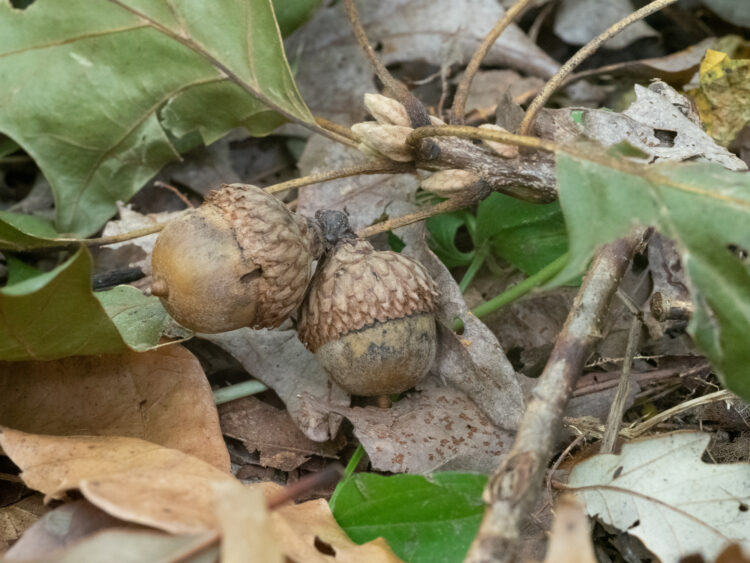black oak (Quercus velutina)
Fagaceae, the beech family
How to recognize black oak. A member of the red oak group, black oak is quite similar to northern red oak. Black oak leaves are thicker and glossier above. They are often orangish beneath, the color imparted by hairs that, alas, are often lacking. Black oak leaves are quite variable, and so are not the best way to tell it apart from red oak.

Black oak at Stratford Woods.
Bark is a helpful determinant. Black oak (left in the image pair below) is very dark brown, rough, with low ridges (inner bark orange-yellow), whereas northern red oak bark is smooth, stripey, on older stems broken into flat-topped ridges separated by narrow fissures. (Bark descriptions from Flora of West Virginia, by P.D. Strausbaugh and Earl L. Core.)

Look-alike oaks.
Right: black oak, Left: northern red
Black oak buds are conspicuously hoary-pubescent (hairy); those of red oak are glabrous (hairless).

Black oak buds are hairy.
Here are comparisons of material gathered on our first class field trip to Stratford Woods State Nature Preserve (the Monday lab on October 17, 2022). On the left, see northern red oak with its glabrous (hairless) buds; on the right black oak, with hoary-pubescent ones.

Look-alike oaks.
Left: red oak. Right: black oak.
Acorns, when present, are also diagnostic. Black oak acorn caps are bowl-like, covering 1/4 to 1/3 (or more) of the nut.

Black oak acorn caps cover a substantial portion of the nut.
By contrast, the red oak acorn cap is saucer-like, covering only about 1/8 of the nut. See the difference below in the drawings from Strausbaugh and Core.
Where to find black oak (and an identification summary). E. Lucy Braun, in The Woody Plants of Ohio (1961, 1989; The Ohio State University Press) describes black oak as “Ranging throughout the Deciduous Forest, usually in dry sites. Widely distributed in Ohio, but most abundant on dry slopes of the Allegheny plateau, and in the sandy soil of ancient beach ridges near Lake Erie. The relatively large glossy leaves lobed about halfway to the midrib (more deeply in some forms), the usually yellow to orange-brown petioles, the free scale-tips forming a fringe around the acorn cup, and the angled, hoary-tomentose winter-buds distinguish black oak. The inner bark of twigs and young branches is orange, whence the common name yellow oak, sometimes applied to this species”.
Scanned Images from an Old Book
(Flora of West Virginia, by P.D. Strausbaugh and Earl L. Core)

Two look-alike oaks.
Left: red oak. Right: black oak.
Note the difference in acorn cap nut coverage.
Ooh ooh. I have a question!
What family are oaks in, and what other two Ohio genera are in that family?
Oaks (genus Quercus) are in the beech family, Fagaceae, along with (of course) Fagus (beech) and Castanea (chestnut).
